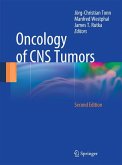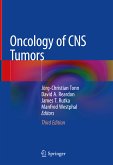Dieser Download kann aus rechtlichen Gründen nur mit Rechnungsadresse in A, B, BG, CY, CZ, D, DK, EW, E, FIN, F, GR, HR, H, IRL, I, LT, L, LR, M, NL, PL, P, R, S, SLO, SK ausgeliefert werden.
"...essential reading for many research scientists and students, as well as clinicans from multiple disciplines, including neurosurgeons, neurologists, medical neurooncologists, and radioation oncologists." -Journal of Neurosurgery
"This multi-author book edited by Gene Barnett from the Cleveland Clinic Foundation is a further title in the renowned series Current Clinical Oncology. Every chapter is written by experts in their field. ... It is primarily of interest to physicians who are involved with these tumor patients. ... the book may be of help for expertises in clinical forensic medicine by covering nearly all aspects of high-grade gliomas and providing the latest advances in diagnosis and therapy." (Andreas Büttner, Forensic Science, Medicine and Pathology, Issue 3, 2007)
"This is a good book if you are interested in high-grade gliomas, as many of us are who practice at cancer hospitals. ... If you have not yet heard of intracavitary chemotherapy wafers, brachy-therapy, convection therapy, nonconformal stereotactic radiotherapy devices, and all of the new chemotherapy agents, you will someday soon, and this is a good place to find that information. Each chapter is clearly written with a consistent style ... . The book is a recommended addition to the neuroradiologist's reference library." (American Journal of Neuroradiology, Vol. 28, September, 2007)
"Leaders in the field provide the latest information on the diagnosis and management of high-grade gliomas in this new groundbreaking text. ... Forefront areas of the clinical investigation are also covered with the promise of leading us to the treatments of tomorrow. ... All physicians treating brain tumors including neurosurgeons, neurologists and radiation oncologists will benefit from the coverage herein of the meaningful advances in our understanding of the biology of the high-grade gliomas that are now leading to better, more rational,patient-specific treatments." (Tumori, Vol. 93, 2007)









